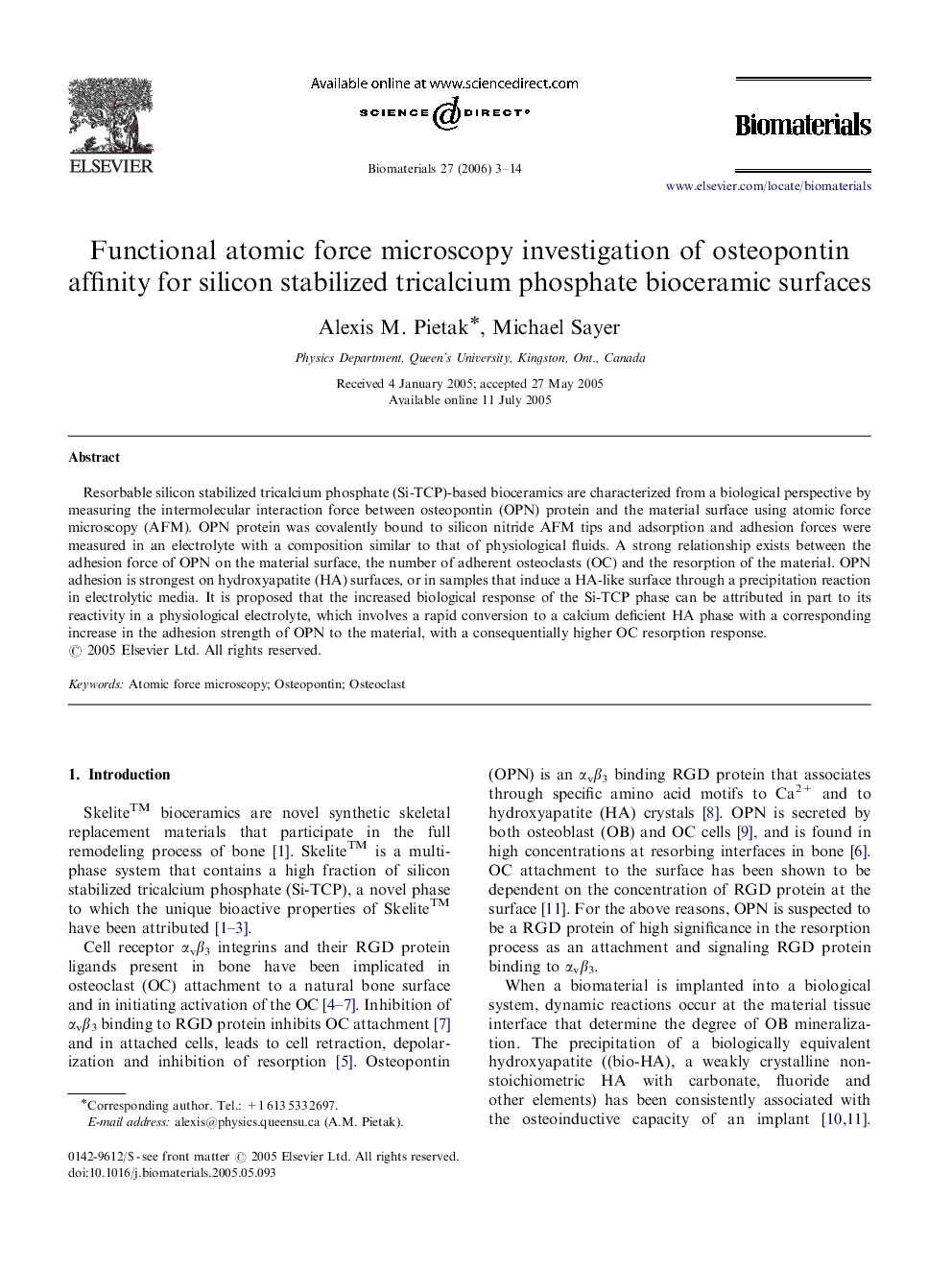| Article ID | Journal | Published Year | Pages | File Type |
|---|---|---|---|---|
| 11850 | Biomaterials | 2006 | 12 Pages |
Resorbable silicon stabilized tricalcium phosphate (Si-TCP)-based bioceramics are characterized from a biological perspective by measuring the intermolecular interaction force between osteopontin (OPN) protein and the material surface using atomic force microscopy (AFM). OPN protein was covalently bound to silicon nitride AFM tips and adsorption and adhesion forces were measured in an electrolyte with a composition similar to that of physiological fluids. A strong relationship exists between the adhesion force of OPN on the material surface, the number of adherent osteoclasts (OC) and the resorption of the material. OPN adhesion is strongest on hydroxyapatite (HA) surfaces, or in samples that induce a HA-like surface through a precipitation reaction in electrolytic media. It is proposed that the increased biological response of the Si-TCP phase can be attributed in part to its reactivity in a physiological electrolyte, which involves a rapid conversion to a calcium deficient HA phase with a corresponding increase in the adhesion strength of OPN to the material, with a consequentially higher OC resorption response.
